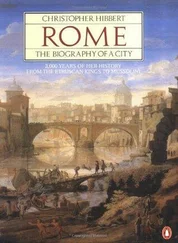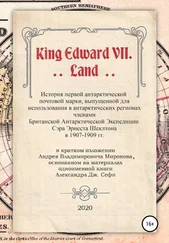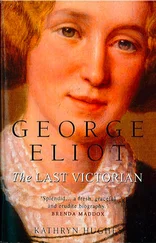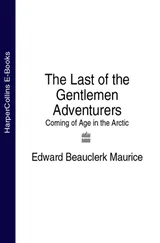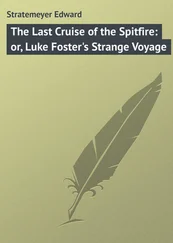He selected his own clothes with the nicest care, and earnestly discussed with his tailor the exact manner in which he thought the cut of the evening dress waistcoat could be improved or the precise reduction that ought to be made in the length of the back of a tail coat. Austen Chamberlain, accompanying the King on a cruise as Minister in Attendance, was ‘very much amused’ to overhear an instruction issued to a Swiss valet as the yacht approached the Scottish coast: ‘Un costume un peu écossais demain.’
The King’s taste in clothes was generally conservative: he attempted to prevent the demise of the frock-coat and to revive the fashion of wearing knee-breeches with evening dress. He refused to wear a Panama hat and derided those who did; he continued to wear a silk hat while riding in Rotten Row long after this was considered old-fashioned. Yet he made several new fashions respectable. His adoption of a short, dark blue jacket with silk facings, worn with a black bow tie and black trousers, on the voyage out to India led to the general acceptance of the dinner jacket. Twenty years later, so Winston Churchill told his mother, ‘everyone wore tweed suits’ at Goodwood Races following the King’s ‘sensible example’; while his appearance at Longchamps Races in an unusually tall, peculiarly shaped top hat started a hunt in London for similar headgear by fashion-conscious Frenchmen who subsequently discovered that the King’s hat was made at a shop in the Place Vendôme and that its shape was attributable to its designer’s anxiety to conceal the baldness at the back of his head. Nevertheless, many other similar hats were soon to be seen on the Paris boulevards. The King’s adoption of the loose, waist-banded Norfolk jacket made this type of jacket popular all over England; while photographs of him wearing a felt hat with a rakishly curved brim brought back from Homburg, or a green, plumed Tyrolean hat from Marienbad, led to thousands of others being sold at home. He found it more comfortable — then decided it looked elegant — to leave the bottom button of his waistcoat undone, and soon no gentleman ever did that button up.
Sometimes he went too far. The sight of the King on a German railway station in a green cap, pink tie, white gloves and brown overcoat induced the Tailor and Cutter to express the fervent hope ‘that his Majesty [had] not brought this outfit home’. Other observers were driven to complain about the tightness of his coats, and the excessive size of his tie-pins, as well as the ungainly figure he cut in those foreign uniforms which he loved to wear even when their short coats, as those of the Portuguese cavalry, ‘showed an immense expanse of breeches’, or when their huge, shaggy greatcoats, as those of the Russian dragoons, made him look ‘like a giant polar bear’. But despite these lapses the King was the acknowledged arbiter of sartorial taste as well as a recognized expert on uniforms, decorations and medals, of which he had an immense collection. When he was at Marienbad, continental tailors came with notebooks and cameras to record any changes in style he might have favoured since the previous season. And in the West End of London, there were often to be seen in the streets short, stout pedestrians who copied not only his clothes but also his beard and way of moving so faithfully that other passers-by respectfully raised their hats to them.
Apart from clothes, sport, food and women, the King had few other interests outside his work. He enjoyed the ritual and regalia of Freemasonry; he liked pottering about in the gardens of his friends, pointing out with his walking stick arrangements and vistas that appealed to him, commenting on alterations that had been made since his last visit. He often went to the theatre and the opera, his arrival at the Royal Opera House, Covent Garden, being preceded by that of a chef and six footmen and by numerous hampers filled with cloths, silver, gold plate and food for the tenor twelve-course meal which was served in the room at the back of the royal box during the hour-long interval.
The King’s favourite theatrical performances were plays about modern upper-class society, musical comedies and light opera rather than classical tragedies, Shakespeare or anything more intellectually demanding. Queen Alexandra, on the other hand, preferred grand opera, and once at Windsor gave instructions for the band to play Wagner. At the same time the King sent a request for Offenbach to the dismayed bandmaster, who thought it advisable to compromise with a selection from Gilbert and Sullivan operettas and thus got into trouble with them both. According to Lady Warwick, ‘the King’s retort to the attempt [by Sir Walter Parratt, Master of the King’s Musick] to introduce more serious musical compositions at the state concerts was to have a performance by Sousa and his band’.
Because of its connections with the court, he took an interest in the Poet Laureateship, and had urged the claims of Swinburne against those of Alfred Austin, whose eventual appointment as successor to Tennyson was due to his services to the Conservative Party. But the King seems rarely to have even so much as opened a book, and almost never to have finished one, a notable exception being Mrs Henry Wood’s romantic novel, East Lynne, which he had read in Egypt as a young man, had recommended to his travelling companions, and about which he subsequently asked them questions to test their familiarity with the plot. On receiving a book he would say how much he was looking forward to reading it; but Winston Churchill, whose mother sent the King a copy of The Malakand Field Force, seems to have been uniquely fortunate in being assured that the book had actually been read with ‘the greatest possible interest’. When supervising the alterations at Buckingham Palace after his mother’s death, he airily gave instructions to the librarian at Windsor to ‘pack up’ his father’s fine collection of books and to ‘get rid of those which were not required’. And when furnishing the library at Sandringham he summoned a man from Hatchard’s bookshop, instructing him to fill the shelves with whatever volumes might be considered suitable for a country house.
Nor did the King display much interest in the visual arts, particularly not in anything which smacked of the avant-garde. In painting he insisted on the strictest accuracy in representation, and far preferred portraits to landscapes. On being shown Holman Hunt’s picture of the London Docks on the night of his marriage, he looked at it closely for a few seconds and then, by way of comment, asked the single question, ‘Where am I?’
He far preferred to be in the open air, although his outdoor activities were now rather limited. Riding not very well, he had still gone out with the West Norfolk Hounds in the 1880s, but his hunting days were over long before he came to the throne. Still weighing over sixteen stone, he was also both too heavy and too old for fencing, which he had practised as a younger man, or for lawn tennis, which he had begun to play in the early 1880s as an additional means of losing weight. He had never been much of a swimmer, and had never taken to cricket, which he had once played on the Curragh, dropping two easy catches and failing to score a single run. Later, he did occasionally play at Sandringham, where he liked it rather better, as it was the common practice to bowl him a few easy balls so that he could score some runs and thus be kept in a good temper. He did not have the patience for fishing, which was, in any case, too lonely an occupation for him. Nor did he greatly care for golf, though he had courses made at both Windsor and Sandringham on which Queen Alexandra and Princess Victoria enjoyed playing a wild game of the Queen’s own invention; this involved a race from tee to hole to see who could get a ball in first. The game usually ended in a hockey-like scrimmage on the green, where the cut and battered balls were once found by the King, who thought someone was trying to play a trick on him.
Читать дальше


